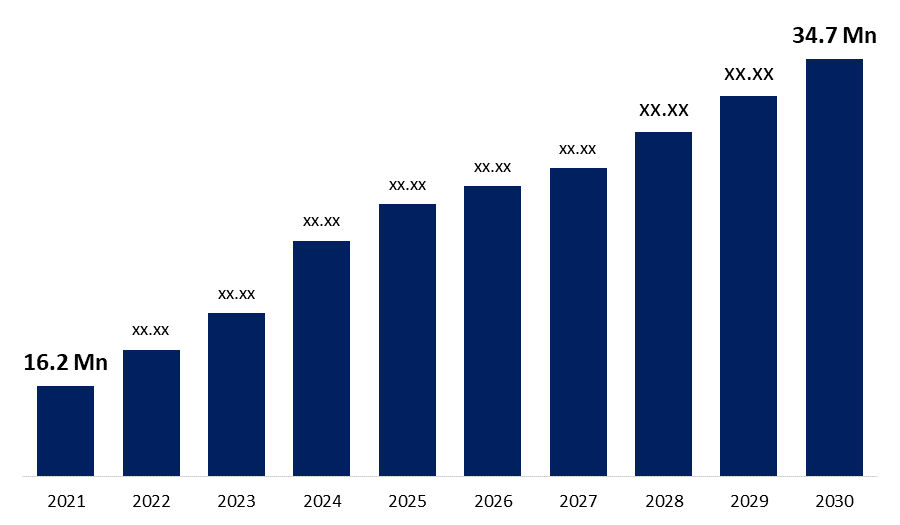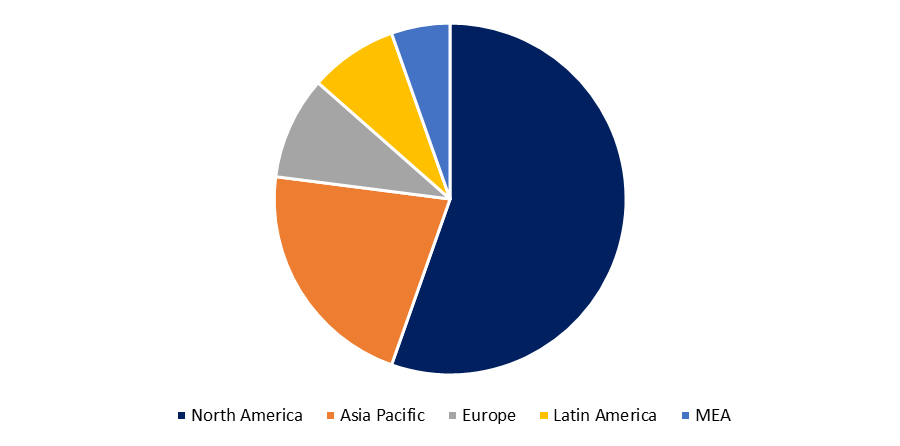Global Artificial Tendons and Ligaments Market Size, Share & Trends, COVID-19 Impact Analysis Report, By Implant Type (Silastic-rod implant, Marlex mesh, Carbon-Fibre implant, Others), By Application (Knee Injuries, Shoulder Injuries, Foot & Ankle Injuries, Spine Injuries, Hip Injuries, Others), By End User (Hospitals, Specialty Clinics, Ambulatory Surgery Centers, Others): By Region (U.S., Canada, Mexico, Rest of North America, The UK, France, Germany, Italy, Spain, Nordic Countries (Denmark, Finland, Iceland, Sweden, Norway), Benelux Union (Belgium, the Netherlands, Luxembourg), Rest of Europe, China, Japan, India, New Zealand, Australia, South Korea, Southeast Asia (Indonesia, Thailand, Malaysia, Singapore, Rest of Southeast Asia), Saudi Arabia, UAE, Egypt, Kuwait, South Africa, Rest of Middle East & Africa, Brazil, Argentina, Rest of Latin America) – Global Insights, Growth, Size, Comparative Analysis, Trends and Forecast, 2021-2030
Industry: HealthcareThe Global Market for Artificial Tendons And Ligaments estimated at US$ 16.2 Mn in the year 2021, is projected to reach a revised size of US$ 34.7 Mn by 2030, growing at a CAGR of 16.8%. A ligament is a piece of fibrous tissue that connects a bone to another bone. The ligament, a fibrous band of connective tissues which keep the bones together at the joints and supports the internal organs. The two main varieties of ligament are the white ligament, which is abundant in collagenous fibres, and the yellow ligament, which is abundant in elastic fibres. A strengthening material called an artificial tendon is used to replace a torn tendon. Bio-compatible fibres, such as polypropylene, polyacrylonitrile, PET (polyethylene terephthalate) are used to make artificial tendons (sodium styrene sulfonate). A team of researchers from the University of Utah's biomedical department recently developed a method to 3D print human tissue, including tendons and ligaments.

Get more details on this report -
The prevalence of sports injuries, the increasing awareness campaigns about artificial tendons and ligaments, the rise in interest in minimally invasive surgery, the advantages of artificial tendons and ligaments, and the problems associated with the use of orthobiologics are all factors that are contributing to the market's growth.
The drivers driving the growth of the global artificial tendons and ligaments market include rising sports injury rates, expanding governmental programmes to raise public knowledge of artificial tendons and ligaments, and rising R&D spending on artificial ligaments and tendons. The global market for artificial tendons and ligaments will also expand as the ageing population and rising desire for minimally invasive surgeries both contribute to tendon and ligament deterioration issues. The key barriers to the growth of the global artificial tendons and ligaments market include healthcare providers' unwillingness to employ artificial tendons and ligaments, the high cost of therapy, and poor reimbursement policies.
Application Outlook
The knee injuries segment dominated the global artificial tendons and ligaments market owing to a number of factors, including an increase in sports participation, an increase in the frequency of knee injuries, discomfort at the harvest site as a result of traditional surgical treatment methods using auto grafts and allografts, and the advantages of artificial tendons and ligaments over auto grafts and allografts.
Global Artificial Tendons and Ligaments Market Report Coverage
| Report Coverage | Details |
|---|---|
| Base Year: | 2021 |
| Market Size in 2021: | US$ 16.2 |
| Forecast Period: | 2021-2030 |
| Forecast Period CAGR 2021-2030 : | 16.8% |
| 2030 Value Projection: | US$ 34.7 Mn |
| Historical Data for: | 2017-2020 |
| No. of Pages: | 210 |
| Tables, Charts & Figures: | 118 |
| Segments covered: | By Implant Type, By Application, By Region |
| Companies covered:: | Corin Group, Xiros Ltd, Mathys AG Bettlach, Cousin Biotech, Orthomed S.A.S., FX Solutions, Shanghai PINE&POWER Biotech, Mitsubishi Electric Corporation. |
| Growth Drivers: | 1)The knee injuries segment dominated the global artificial tendons and ligaments market 2)The hospitals segment dominated the global artificial tendons and ligaments market |
| Pitfalls & Challenges: | COVID-19 has the potential to impact the global market |
Get more details on this report -
Hip dislocation, elbow injuries, and spinal injuries are all included in the other applications division. Due to the rise of whole femoral tumour removals and prosthetic replacement surgeries, which have a high percentage of success, the segment is expected to grow significantly. Some of the important items in this category include NAJA and IntraSpine by Cousin Biotech, LARS by Cousin Biotech, InternalBrace by Arthrex.
End-User Outlook
The hospitals segment dominated the global artificial tendons and ligaments market owing to huge re-admission rate brought on by postoperative complications and a large volume of patient turnover. The adoption of these grafts in hospitals and clinics' end-user facilities will also be boosted by supportive infrastructure, which aids in effective operations.
Regional Outlook
Europe region is dominating the market share of global artificial tendons and ligaments market owing due to rise in government initiatives to promote sports, the rise in conferences, symposiums, and workshops showcasing the newest sports technologies in the UK, the rise in sports-related injuries and knee replacements, the expansion of the medical device industry, the low out-of-pocket costs for medical devices, and agreements between universities, organizations, and institutions are all factors driving the artificial tendons and ligaments market for Europe.

Get more details on this report -
Key Companies & Recent Developments
Partnerships, strategic mergers, and acquisitions are expected to be the most successful strategies for industry participants to get speedy access to growing markets while also improving technological capabilities. In addition, product differentiation and developments, as well as service expansion, are projected to help organizations thrive in the market. Generic strategies adopted by the companies usually include mergers & acquisitions, distribution network expansion, and product portfolio expansion. For instance, Printed muscle and tendon tissue may now be produced using a microplate technology that was created in June 2018 by a team of Swiss researchers. This technology might be useful as a therapeutic tool to treat different muscular problems. Due to its nearly 20-year distribution of the Ligament Augmentation and Reconstruction System (LARS), Corin Australia earned news. More than twenty devices in the LARS line offer augmentation choices for a variety of lower and upper limb applications. A team of scientists from the University of Colorado Boulder created a human-like artificial muscle in January 2018 that is affordable, flexible, and powerful. The major companies profiled in this report include Orthomed S.A.S. (France), LARS (France), Neoligaments (UK), Cousin Biotech (France), Mathys AG Bettlach, FX Solutions (France), and Shanghai PINE&POWER Biotech (China), are the leading companies in the global artificial tendons and ligaments market (Switzerland).
Segmentation:
By Implant Type
- Silastic-rod implant
- Marlex mesh
- Carbon-Fibre implant
- Others
By Application
- Knee Injuries
- Shoulder Injuries
- Foot & Ankle Injuries
- Spine Injuries
- Hip Injuries
- Others
By End User
- Hospitals
- Specialty Clinics
- Ambulatory Surgery Centres
- Others
By Region
- North America- U.S., Mexico, Canada
- Europe- UK, France, Germany, Italy
- Asia-Pacific- China, Japan, India
- Latin America- Brazil, Argentina, Colombia
- The Middle East and Africa- United Arab Emirates, Saudi Arabia
Key Players
- Corin Group
- Xiros Ltd
- Mathys AG Bettlach
- Cousin Biotech
- Orthomed S.A.S.
- FX Solutions
- Shanghai PINE&POWER Biotech
Need help to buy this report?